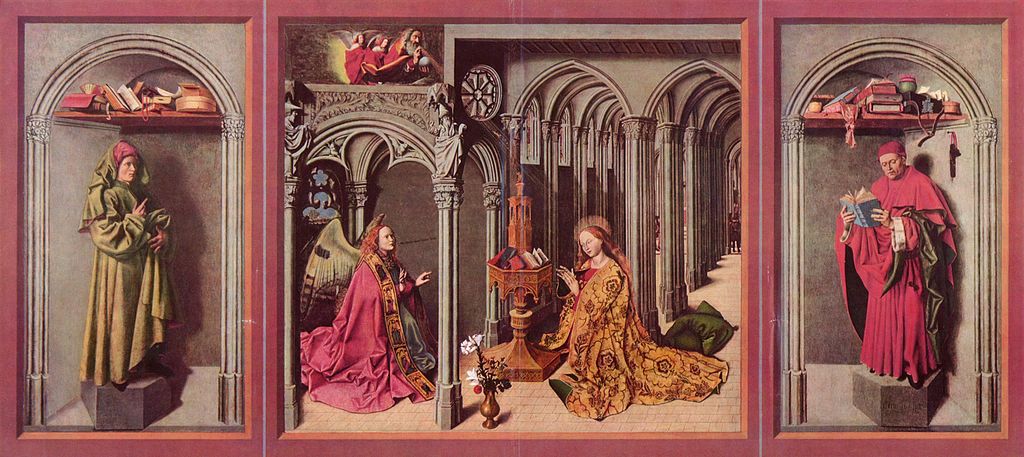
Berthélemy d'Eyck, The Annunciation with Isaiah and Jeremiah (open state)

1443-44
Oil and tempera on wood
Museum Boijmans Van Beuningen, Sainte-Marie-Madeleine, Aix-en-Provence

In some ways the central panel differs from traditional images of the Annunciation. What flies down on light rays to the Virgin Mary is not the usual dove but a homunculus representing the child who is to be born. This way of imagining the Incarnation was condemned by Molanus because it implied that Jesus did not take his body from Mary's. Another difference is the hexagonal shape of the bookstand and of the temple miniature that rises from it. The six sides would refer to the sixth age, the "age of grace" that begins with the Incarnation.
Otherwise the image is quite conventional. As usual, the two figures are separated architecturally. There is a vase of lilies to signify Mary's Virginity. And the Father presides from on high.
Isaiah and Jeremiah are in the left and right panels. Jeremiah's podium is labeled with his name; Isaiah's does not seem to be inscribed, but that may be due to natural fading. Both prophets were believed to have predicted the virgin birth. Both are usually pictured as somewhat advanced in age, but here they are beardless and, if not youthful, in the early stages of manhood.
Read more about images of the Annunciation and about Isaiah and Jeremiah.
Source: Wikimedia Commons.